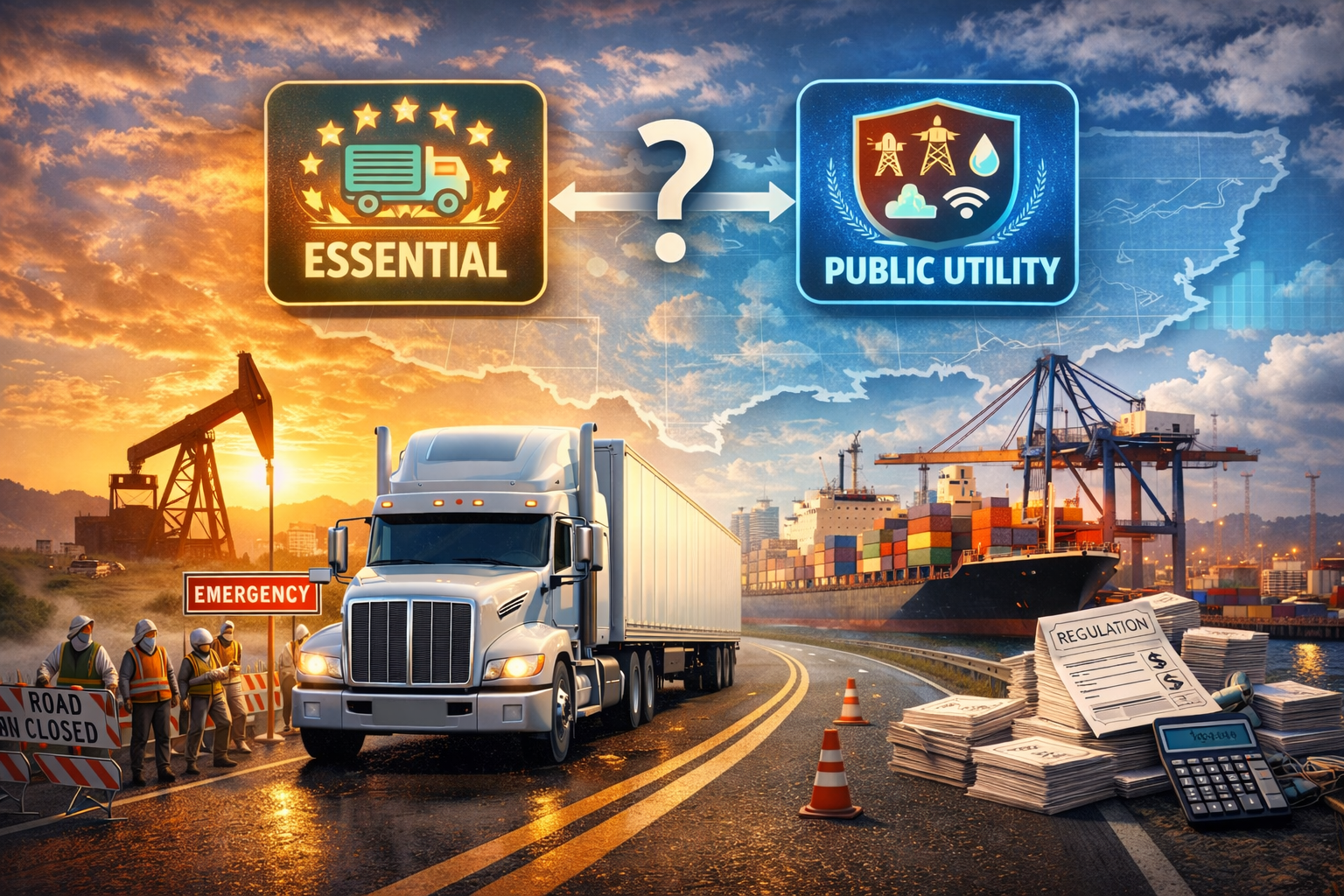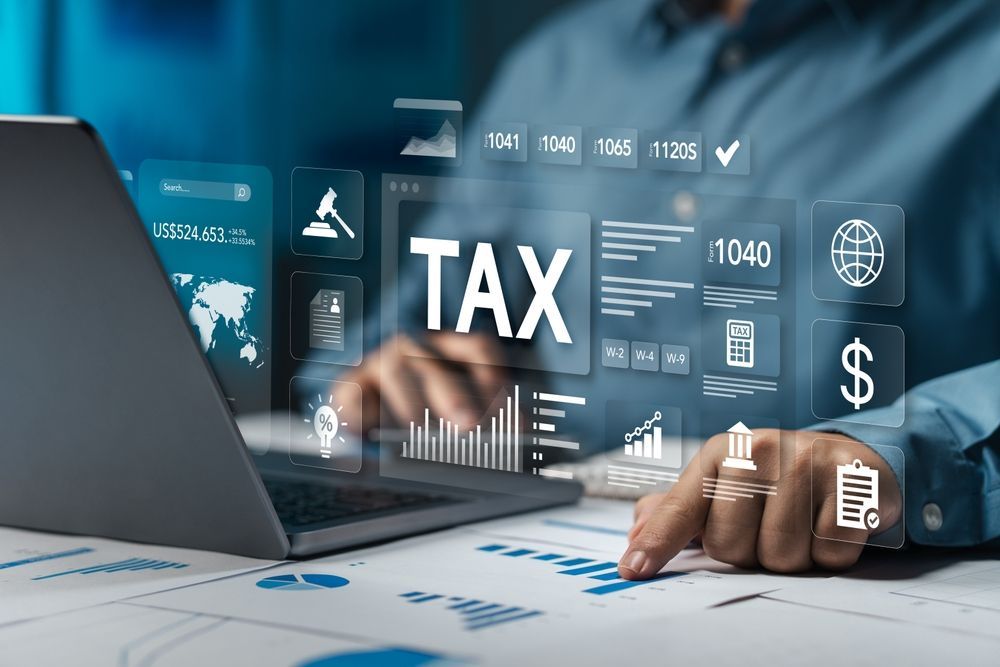Hidden Lost Profits for Trucking Operations in the Sales Tax Arena
Share this Article:

Executive Summary
Trucking companies operate on razor-thin margins, and most leaders look to fuel optimization, driver retention, and freight mix to protect profitability. Yet a surprising share of lost profit hides in plain sight: the sales tax arena. Misapplied exemptions, inconsistent treatment of repairs and parts, overlooked use tax, and fragmentation across states can quietly drain hundreds of basis points from EBITDA. This article explains where those leaks occur, how to quantify their impact, and a practical roadmap to reclaim dollars without adding trucks, lanes, or headcount.
Why Sales and Use Tax Is a Profit Center—Not Just a Compliance Obligation
Sales and use tax is often seen as a pass‑through—collected on taxable sales and remitted—so it’s rarely framed as a strategic lever. In multi‑state trucking operations, however, the mechanics are more nuanced:
- You buy substantial volumes of taxable inputs (parts, tires, shop supplies, tools, software subscriptions, telematics devices, and even office equipment). If a vendor fails to charge the correct tax—or overcharges—you either remit use tax or pay too much and never recover it.
- Many purchases are conditionally exempt depending on use (rolling stock, repairs for interstate carriers, manufacturing/processing exemptions on in‑house fabrication, etc.). Misclassification in either direction costs money: pay tax unnecessarily, or under‑accrue and later fund assessments, penalties, and interest.
- Decentralized procurement (shops, terminals, road calls) plus high vendor turnover magnify error rates. A 1–3% error rate on eight‑figure spend is six‑figure leakage annually.
- Audit posture influences outcomes. When records are incomplete, auditors estimate—almost always to the taxpayer’s detriment. Proactive documentation can shift that curve.
Bottom line: treating sales and use tax as a controllable cost—managed like fuel or maintenance—can liberate material profit.
The 12 Most Common Profit Leaks for Trucking Operations
1) Rolling Stock and Component Exemptions Misapplied
Many states provide exemptions or reduced tax rates for rolling stock used in interstate commerce. Eligibility often hinges on:
- Vehicle weight thresholds;
- Miles or trips outside the state;
- Common carrier vs. private carrier status;
- Ownership vs. lease; and
- Where title/possession transfers.
Two recurring issues:
- Over‑payment: Paying tax on tractors, trailers, or major components (engines, transmissions, APUs) that qualify for exemption when you buy in the wrong state or the vendor defaults to tax.
- Under‑accrual: Claiming an exemption without satisfying registration, affidavit, or apportionment requirements—leading to assessments later.
Fix: Standardize purchase channels for equipment; maintain exemption certificates and interstate use documentation; and align accounting codes so large components are flagged for review.
2) Repairs, Parts, and Maintenance—Taxability Varies by Context
Repair labor and parts are treated differently state‑to‑state. Common pitfalls:
- Lack of separation on invoices between labor and parts where labor is exempt.
- Shop supplies (rags, solvents) deemed taxable consumables even if rolled into a repair order.
- Mobile service in cross‑border areas where the “place of service” changes tax outcomes.
Fix: Require vendors to separately state labor vs. parts; embed tax rules in purchase order terms; and ensure mobile service tickets capture GPS/terminal data to pin the taxing jurisdiction.
3) Tires, Retreads, and Environmental Fees
Besides sales tax, tires may carry state environmental fees or differential rates. Misapplied fees, or treating retreads as the same as new tire sales, cause small errors that compound at scale.
Fix: Catalog tire SKUs with tax attributes (new vs. retread, off‑road vs. on‑road) and validate environmental fee application.
4) DEF, Lubricants, and Non‑Fuel Fluids
Diesel Exhaust Fluid and certain lubricants are sometimes exempt or taxed differently from fuel. Vendors and shop teams may default to the fuel tax rules or retail norms.
Fix: Maintain a commodity matrix for fluids. Where DEF qualifies for exemptions tied to pollution control equipment, collect and store the necessary use statements.
5) Rentals, Leases, and Sub‑leases of Equipment
The tax treatment of daily rentals, capital leases, and long‑term operating leases varies. You might be paying tax on the full buy‑out value when a stream‑of‑rental tax would be cheaper—or vice versa. Sub‑leasing to owner‑operators or affiliates introduces another layer of complexity.
Fix: Centralize lease review with tax. Model both options (up‑front vs. periodic taxation) and choose the lower‑cost path per state.
6) Telematics, ELDs, and Software as a Service (SaaS)
SaaS, data services, GPS hardware, and content subscriptions are taxed inconsistently across states. Invoices often bundle hardware + software + service under a single line.
Fix: Require itemization and map each component to state rules. Negotiate vendor contracts that separate tangible hardware from digital services. Set up AP coding to drive the right tax treatment.
7) Accessorials and Surcharges on Customer Invoices
Fuel surcharges, detention, lumper fees, and ancillary services may be bundled into the tax base in some jurisdictions, even if freight itself is exempt. If invoicing systems are not configured properly, you either over‑collect (risking exposure and customer friction) or under‑collect (eroding margin through assessments).
Fix: Build a taxability matrix for each price element. Configure the invoicing engine so fuel surcharge, accessorials, and third‑party pass‑throughs follow the proper tax flags by state and by commodity/service.
8) Interstate Commerce and the “We Don’t Owe Tax” Myth
Teams sometimes assume that if a shipment crosses state lines, everything related to it is exempt. Not true. Many states tax in‑state services (e.g., truck repairs performed within the state) regardless of the shipment’s interstate nature, and they may tax tangible personal property used in the state even if purchased elsewhere without tax.
Fix: Train terminal leaders and shop managers to separate sales tax on purchases from exempt freight charges. Use geolocation on service events to determine the taxing situs.
9) Drop Shipments and Multi‑party Transactions
For parts distribution or specialized equipment, drop shipments can trigger unexpected nexus and collection obligations, especially when selling to owner‑operators or affiliates across states.
Fix: Map drop‑ship supply chains and ensure you have correct resale documentation from intermediaries. Where your vendor cannot accept your exemption certificate type, structure the transaction to minimize tax friction (e.g., multi‑step invoicing, certificates that the vendor can honor).
10) Related‑Party and Intercompany Charges
Shops that recharge parts/labor to operating entities, or corporate allocations for IT/telematics, can create taxable transfers. Auditors scrutinize intercompany documentation, especially when markup policies are inconsistent.
Fix: Document intercompany agreements; decide whether to treat internal shops as cost centers or profit centers; and align tax treatment with that structure. Avoid casual “management fee” descriptions—be specific about the underlying goods/services.
11) Local Taxes, Home‑Rule Cities, and Special Districts
Beyond state law, home‑rule localities (notably in certain states) have their own rules and audits. A terminal inside city limits may face a different tax landscape than one outside, despite sharing a ZIP code.
Fix: Maintain a GIS overlay of terminals and service locations with local jurisdiction boundaries. Configure your tax engine to respect home‑rule variations.
12) Use Tax Accruals—The Silent Margin Eroder
When vendors don’t charge tax correctly, you must self‑assess use tax. Many AP systems lack the fields, controls, or discipline to do this accurately. The result: either over‑accrual (immediate margin hit) or under‑accrual (future assessment with penalties and interest).
Fix: Build automated use‑tax rules tied to item codes and vendors. Reconcile accruals monthly and true them up after periodic audits or reverse audits.
Quantifying the Impact: A Simple Model
Leaders often ask, “How big could this be for us?” Here’s a practical way to estimate without a full forensic review.
- Identify Spend Buckets (annual):
- Apply an Error Band by bucket (conservative averages seen in multi‑state trucking environments):
- Estimate Leakage: Multiply spend by the midpoint of the applicable error band.
- Overlay Audit Risk: For categories with historical under‑accrual, add penalties and interest (often 10–25% of understated tax over the look‑back period).
It is common for mid‑sized carriers to uncover six to seven figures in recoveries and prospective savings.
Reverse Audits: Turning Compliance Gaps into Refunds
A reverse audit reviews past purchases to identify tax paid in error, preparing refund claims with vendors or states. In trucking, high‑yield areas include:
- Exempt rolling stock components taxed at purchase;
- Over‑taxed repairs where labor should have been exempt;
- SaaS and data services mischaracterized as taxable software licenses;
- Environmental fees misapplied on retreads or exempt classes of tires; and
- DEF treated like taxable fuel in states where exemptions exist.
Keys to success:
- Pull data directly from AP and purchasing systems (not just PDFs);
- Normalize vendor names and map to spend categories;
- Sample invoices to validate patterns before filing large refund claims;
- Maintain defensible documentation (exemption certificates, use statements, mileage apportionment) to support eligibility; and
- Coordinate refunds with your use‑tax accrual process to avoid whipsaw effects (e.g., claiming a refund while continuing to over‑accrue).
Building a Sales & Use Tax Operating System (SUT‑OS)
Think of sales and use tax like a micro‑ERP within your finance stack. An effective SUT‑OS has four layers:
- Policy Layer
- Data & Master‑File Layer
- Process Layer
- Technology Layer
When these layers work together, tax becomes a controlled cost driver rather than an audit roulette wheel.
People and Training: Where Leaks Really Start
Even the best rules fail without front‑line adoption. Focus training on:
- Shop managers and parts purchasers: How to code invoices, when to ask for itemization, and when to require certificates.
- AP processors: Recognizing red flags (bundled SaaS invoices, missing labor/parts split, suspicious environmental fees).
- Sales & billing teams: Charging tax on accessorials correctly; avoiding over‑collection; maintaining customer exemption files.
- Terminal leaders: Understanding interstate exemptions vs. in‑state service tax rules; capturing situs data for mobile repairs.
Tip: Build micro‑checklists that sit in the workflow—PO creation, invoice approval, customer setup—so the right questions are asked at the right time.
The Audit Lifecycle—and How to Win It
Audits happen. The difference between a routine exam and a profit hit is preparation.
- Pre‑Audit Hygiene
- Scope and Sampling
- Issue Triage
- Settlement and Prospective Fixes
Owner‑Operators, Subcontractors, and the Grey Areas
Trucking networks rely on a mix of company drivers and owner‑operators (O/Os). Sales and use tax issues arise when:
- You sell parts or fuel internally to O/Os at terminals—are you collecting the right tax? Do you have resale certificates when appropriate?
- You lease terminals, yard space, or equipment to O/Os—are these leases taxable in the state?
- You pass through third‑party services (lumper, towing) on customer invoices—does the pass‑through become part of the tax base?
Good practice: Treat O/O interactions as third‑party commerce from a tax perspective. Maintain customer/vendor profiles and certificates as if they were external.
M&A, New Markets, and Nexus Shock
Acquisitions can trigger sudden nexus in unfamiliar jurisdictions. Assumptions from the legacy footprint often fail post‑deal. Common surprises:
- Local taxes in home‑rule cities;
- Different treatment of SaaS and data services;
- Rolling stock exemptions that require specific registration or affidavits; and
- Pre‑existing exposure at the target related to poor use‑tax accruals.
Integration playbook:
- Conduct a SUT due diligence workstream alongside financial diligence;
- Harmonize item masters and tax rules on Day 1;
- File nexus registrations promptly where activities begin; and
- Consider voluntary disclosure agreements (VDAs) to cap historical exposure in newly discovered jurisdictions.
A 90‑Day Action Plan to Reclaim Hidden Profit
Day 1–30: Baseline and Quick Wins
- Pull 12–24 months of AP data; classify vendors and spend categories.
- Identify top 20 vendors by tax risk (parts distributors, tire suppliers, telematics providers, shops).
- Sample invoices for each category; note recurring issues (missing labor separation, bundled SaaS, misapplied fees).
- Launch vendor conversations to correct go‑forward invoicing (itemization, certificate acceptance, rate tables).
Day 31–60: Build Controls 5. Configure AP rules to auto‑accrue use tax by item code where vendors frequently miss. 6. Stand up a certificate management process for rolling stock, resale, and service exemptions. 7. Publish a two‑page policy for shops and terminals: what’s taxable, what’s exempt, when to escalate. 8. Start a reverse audit on the two highest‑yield categories (e.g., rolling stock components and SaaS/telematics).
Day 61–90: Industrialize 9. Integrate a tax engine or rules service to ERP/TMS for invoicing and AP. 10. Create a dashboard: error rate by category, open refund claims, accrual variance. 11. Run an audit simulation using a statistical sample to size residual exposure and validate controls. 12. Present results to leadership with a run‑rate savings estimate and next‑year roadmap.
Technology Enablers: Right‑Sizing the Stack
Not every fleet needs a heavyweight tax engine, but a few capabilities pay for themselves:
- Certificate Management: Digital repository, renewal workflows, and vendor/customer lookups.
- Item‑Level Tax Rules: Whether through a tax engine or ERP logic, tag parts, fluids, SaaS, and equipment with tax attributes.
- Geospatial Jurisdiction Mapping: To handle home‑rule cities and mobile services correctly.
- Analytics: Automated detection of invoices with suspect tax (e.g., repair orders without labor/parts split; SaaS invoices with one bundled line; tire invoices with missing fee codes).
- Document Automation: OCR that preserves line‑level detail so tax can be analyzed programmatically.
If you already run AP automation and a TMS, you may be 70% of the way there. The incremental lift is in mapping taxonomy and building the rules.
Culture: Making Tax Boring (in a Good Way)
The goal is not to turn shop managers into tax experts. It’s to make the right decision obvious in the workflow. That means checklists, defaults, and nudges:
- Default PO templates with placeholders for labor vs. parts lines.
- Tooltips in the invoicing system that explain when fuel surcharge is in the tax base.
- Hard stops when a high‑risk vendor invoice lacks itemization.
When people don’t need to think about tax, they won’t—and that’s how leaks stay plugged.
Measuring Success: KPIs That Matter
Track a handful of KPIs monthly:
- Effective error rate: Tax corrections / in‑scope spend.
- Use‑tax true‑up variance: Accrued vs. remitted.
- Refund pipeline: Claims filed, approved, and cash collected.
- Audit outcome trend: Initial proposed assessments vs. final—target a shrinking delta.
- Training coverage: % of frontline users who passed the micro‑modules.
Tie a portion of G&A efficiency goals to these KPIs to keep attention on the dollars.
Frequently Asked Questions
Q: Are freight charges taxable? A: Often no when separately stated for transporting goods, but accessorials (detention, lumper, inside delivery) may be taxable in some jurisdictions. Configure invoice lines accordingly.
Q: If we operate interstate, are our truck and trailer purchases automatically exempt? A: Not automatically. Many states offer exemptions with specific qualifications (weight, miles out‑of‑state, carrier status) and documentation (affidavits, registrations). Without paperwork, you risk assessments.
Q: Can we rely on vendors to get tax right? A: Vendors vary widely in sophistication. You’re ultimately responsible for use tax where vendors under‑collect, and you’ll lose margin where they over‑collect unless you pursue refunds.
Q: What’s the typical ROI on a reverse audit and control build‑out? A: Carriers frequently see 3–10x first‑year ROI combining cash refunds, reduced audit exposure, and lower go‑forward tax on purchases.
Q: Do home‑rule cities really audit? A: Yes, in certain states they do—and they often have rules that diverge from the state’s. Treat them as distinct jurisdictions in your setup.
Case Snapshots (Composite Examples)
Regional TL Carrier (300 power units): Problem: Over‑taxed on rolling stock components and SaaS/ELD bundles. Action: Reverse audit identified $420k in refunds; AP rules added for use‑tax accrual; vendor contracts amended for itemization. Result: $420k cash + $180k annual run‑rate savings.
Specialized Flatbed Operator (multi‑state terminals): Problem: Tire environmental fees and local tax misapplication in home‑rule cities; owner‑operator parts counter sales under‑collected. Action: Jurisdiction mapping; point‑of‑sale tax flags; training at parts counters. Result: $210k exposure avoided; $90k in refunds; clean subsequent audit.
Dedicated Contract Carrier (private fleet conversion): Problem: Lease vs. buy tax modeling ignored; paid up‑front tax on assets better suited to rental‑stream taxation. Action: Restructured equipment acquisition; implemented lease tax model by state. Result: 70 bps improvement in annualized cash outflow on capex program.
Leadership Checklist: Are We Leaving Money on the Table?
- Do we have a single owner for sales & use tax policy who can say “yes/no” with authority?
- Is there a living matrix of taxability by state for our top 50 purchase and invoice categories?
- Are AP and shops required to separate labor and parts on all repair invoices?
- Do we routinely accrue use tax on vendors known to miss tax, with monthly true‑ups?
- Is our certificate file complete, digital, and monitored for expiration?
- Are telematics/SaaS invoices itemized with hardware vs. service separated?
- Do we track home‑rule jurisdictions and configure systems accordingly?
- Have we conducted a reverse audit in the last 24 months?
- Do we simulate an audit sample annually to validate controls?
If you answered “no” more than twice, there is likely six‑figure value waiting to be captured.
Conclusion: Make Tax a Margin Strategy
Trucking success is usually framed in operational terms: equipment availability, on‑time performance, safety, and driver satisfaction. But as fleets grow across state lines and complexity rises, sales and use tax can quietly become a material source of lost profit. The opportunity is two‑sided: recover past overpayments and build a system that gets it right going forward. With a focused 90‑day plan, disciplined data, and practical controls embedded in daily workflows, carriers can convert tax from a compliance afterthought into a durable margin advantage.
Disclaimer: This article provides general information and does not constitute legal or tax advice. Consult qualified professionals for advice tailored to your specific circumstances.
Transportation Tax Consulting LLC - www.transportationtaxconsulting.com
Share with Us:




